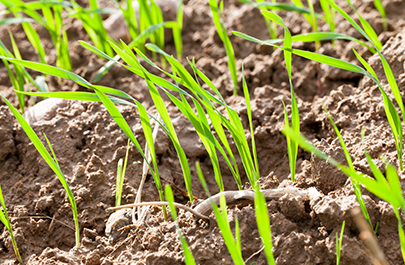Autumn application
Autumn fertilization - strongly dependent on the previous crop:
Winter barley needs some of its nutrients already in autumn. Nitrogen replenishment may be sufficient from the mineralisation of soil organic matter. Crops grown on the same land previously such as soybean or rapeseed or the use of small amounts of farm manures improve the supply of nitrogen. If these nitrogen sources are absent or if the straw from the previous crop is immobilizing nitrogen, applying a small amount (30kg N/ha) may be an advantage. For the required autumn development, the sowing rate is less relevant than the optimal sowing date and not too scarce a nitrogen supply.
First application in spring
First dose in spring at the beginning of the vegetation:
The first spring dose (50-80kg N/ha) is usually the most important and should take place as soon as possible to achieve full yield relevance. The first fertilization maximises the stock density and the number of stalks with ears (plant density type) which is more important for two-row varieties than for multi-row varieties. Weaker stocks must be particularly strengthened by appropriate fertilization. Only above-average developed crops, as a response to a nutrient supply from the previous crop or multi-row varieties, justify delayed or reduced fertilization. This dose is (70-90kg N/ha) focussed on particularly for malting barley varieties.
Second application in spring
Dose at the start of shooting:
The measurement of the second dose (40-60 kg N/ha) is matched to the first dose. It is higher in multi-row varieties, as they form a considerable part of the yield by the development of the individual ear (compensation or individual ear type). Fertilization takes place approximately four weeks after the first spring application at the beginning of longitudinal growth (beginning of long day at the end of March) in EC 30-31 (shooting). This dose is reduced for malting barley varieties, to avoid high protein contents.
Third application in spring
Dose in the flag leaf stage:
To optimise the grain filling and increase protein synthesis, for multi-row feed barley an additional dose of 30-40 kg N can be particularly relevant. Malting barley is not fertilized, as it would jeopardise brewing ability due to high protein contents.


























